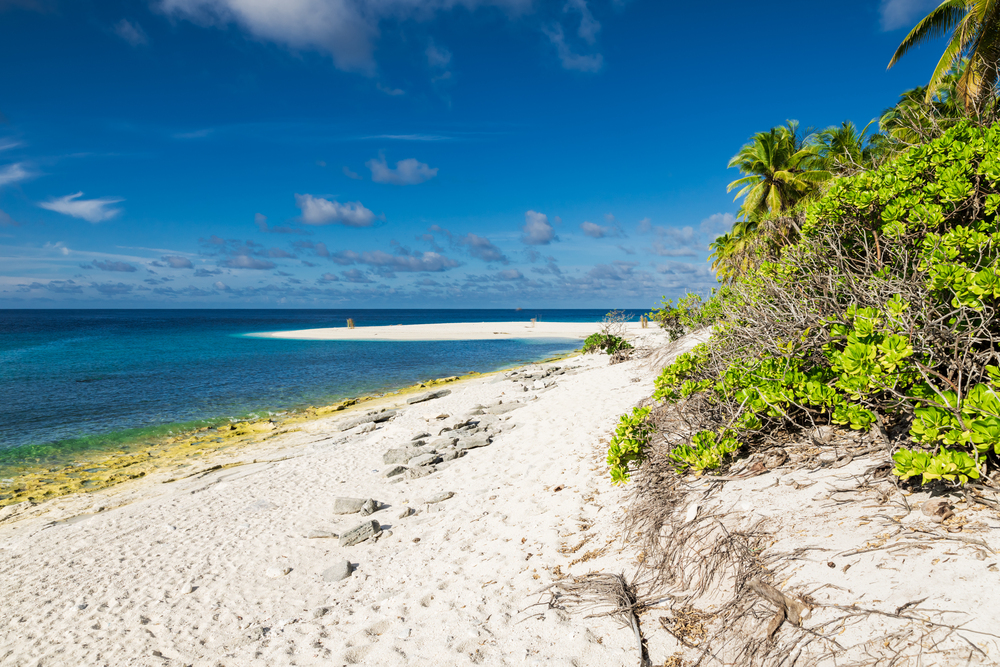Travel taxes can significantly impact your vacation fund in ways few tourists expect. From departure taxes and accommodation taxes to tourism taxes, governments all over the world have found that tourists are an excellent source of revenue. The extra charges often come hidden within ticket prices or are added to the hotel bill, blindsiding tourists with how much extra they’re paying.
Learning about these extra costs will enable you to budget better and prevent unpleasant surprise expenses on the road. Certain nations rationalize these charges to protect the environment, while others utilize them to finance road enhancements or increase national income.
Below is a list of 20 travel tax nations that could impact your next vacation travel.
Japan (East Asia)

Japan charges a departure tax, aptly referred to as the ‘Sayonara Tax,’ of around $9 to anyone exiting the country. The relatively new charge was established in 2019 to develop tourism infrastructure before the Tokyo Olympics and is charged to tourists and locals alike.
The income is used to finance multilingual services and cashless payment systems at tourist spots across the island nation.
United Kingdom (Northern Europe)

The UK’s Air Passenger Duty ranks among the world’s steepest flight taxes, with long-haul flights in premium cabins costing travelers up to $200 per person. This tax increases based on flight distance and class of travel, making those comfortable business class seats to London even more expensive.
British authorities frame this substantial levy as an environmental measure, though critics argue it’s primarily a revenue-generating tool for the government.
Like Travel Pug’s content? Follow us on MSN.
Austria (Central Europe)

Austria imposes a high accommodation tax that differs from province to province, with Vienna adding 3.2% to hotel bills. Tourists lodging in the Alpine country’s capital city also pay city taxes that rise with luxury hotel ratings, so tourists splurging on five-star hotels pay much higher sums.
These revenues fund the nation’s tourism infrastructure and cultural conservation activities in its historic cities.
Netherlands (Western Europe)

The Netherlands charges a departure tax of approximately $30 for all passengers flying out of Dutch airports. Amsterdam also imposes an additional city tourist tax of 7% of room rates plus a fixed fee per person per night, creating a double taxation scenario for visitors.
Dutch authorities have transparently used these revenues to develop more sustainable tourism practices nationwide.
Germany (Central Europe)

Germany’s air travel tax ranges from $13–$60, depending on the distance of your flight from German airports. Many German cities also impose ‘culture taxes’ or ‘bed taxes’, averaging 5% of accommodation costs in popular destinations like Berlin and Munich.
These combined fees generate substantial revenue that supports Germany’s exceptional public transportation systems and cultural institutions.
Like Travel Pug’s content? Follow us on MSN.
Bhutan (South Asia)

Bhutan operates under a ‘High Value, Low Impact’ tourism model that requires visitors to pay a Sustainable Development Fee of $200 per person per day during peak season. This substantial daily charge covers accommodation, transportation, guide services, and contributes to free healthcare and education for Bhutanese citizens.
The system effectively limits tourist numbers while ensuring tourism benefits the entire country.
Barbados (Caribbean)

Barbados implemented an Airline Travel and Tourism Development Fee ranging from $35–$70, depending on destination, plus a separate hotel room levy of up to 10%. These combined charges make this Caribbean paradise considerably more expensive than the advertised resort rates suggest.
The island nation uses these revenues to maintain its pristine beaches and support tourism marketing efforts abroad.
Maldives (South Asia)

The Maldives charges a Green Tax of $6 per person per night plus a departure tax of approximately $30 for all visitors leaving the country. These fees contribute to conservation efforts for the nation’s fragile marine ecosystem and rising sea level defenses.
Given the existential threat climate change poses to this low-lying island nation, these taxes directly fund critical environmental protection initiatives.
Like Travel Pug’s content? Follow us on MSN.
Australia (Oceania)

Australia’s Passenger Movement Charge sets visitors back $47 when departing the country by air or sea. This substantial fee applies to international travelers leaving Australian shores and has steadily increased over the years without corresponding service improvements.
The vast distances between Australia and other countries mean this tax becomes unavoidable for anyone visiting the continent.
New Zealand (Oceania)

New Zealand’s International Visitor Conservation and Tourism Levy costs travelers approximately $24 and must be paid before entering the country. Additionally, departure fees built into airline tickets add another $12–$22, depending on your destination.
These combined charges fund conservation projects protecting the stunning natural landscapes that draw visitors to the country in the first place.
Italy (Southern Europe)

Italy implements city taxes that vary widely across tourist destinations. Venice charges up to $10 per person per night during peak season. Rome, Florence, and other major Italian cities have similar charges that increase with hotel star ratings and season.
These taxes help manage overtourism and fund the maintenance of Italy’s incomparable historical and cultural treasures.
Like Travel Pug’s content? Follow us on MSN.
Spain (Southern Europe)

Spain’s Balearic Islands, including Majorca and Ibiza, charge a Sustainable Tourism Tax ranging from $1–$4 per person per night, depending on accommodation type and season. Barcelona imposes an additional city tax that effectively doubles these amounts for visitors to the Catalan capital.
These fees fund environmental protection and infrastructure improvements across Spain’s most popular tourist regions.
France (Western Europe)

France applies a tourist tax (‘taxe de séjour’) in virtually every tourist destination, with Paris charging up to $5 per person per night for luxury accommodations. The French capital recently increased these rates to help fund Olympic infrastructure improvements and maintain its status as the world’s most visited city.
Even smaller French towns implement these taxes, creating a nationwide system of visitor contributions.
Croatia (Southern Europe)

Croatia requires all visitors to pay a Sojourn Tax, which ranges from $1–$3 per person per night, depending on the season and destination category. Popular coastal destinations like Dubrovnik charge premium rates during summer when tourism peaks.
These fees help maintain infrastructure in a country where tourism accounts for nearly 20% of the national GDP.
Like Travel Pug’s content? Follow us on MSN.
Switzerland (Central Europe)

Switzerland imposes tourist taxes that vary by canton and city, with popular destinations like Zurich charging around $2.50 per person per night. Some Alpine resorts add fees that can double this amount during ski season.
Despite Switzerland’s high prices, these taxes are rarely included in advertised hotel rates, creating unexpected costs upon checkout.
Mexico (North America)

Mexico charges a visitor tax of approximately $30, which is typically included in airline tickets for international travelers. Popular beach destinations like Cancun add an environmental tax of $1–$3 per room per night to fund beach restoration and coral reef protection.
With nearly 40 million annual international visitors, these small fees generate substantial revenue for Mexican tourism infrastructure.
United Arab Emirates (Middle East)

The UAE imposes a Tourism Dirham Fee in Dubai of $3–$6 per room per night, depending on hotel classification. Abu Dhabi charges a similar fee, a 6% tourism fee on hotel stays, and a separate municipality fee.
These charges help fund the emirates’ continuous development of attractions and infrastructure without imposing income taxes on residents.
Like Travel Pug’s content? Follow us on MSN.
Singapore (Southeast Asia)

Singapore charges a 10% service charge plus 7% goods and services tax on all hotel accommodations, effectively adding 17% to your room rate. The city-state’s compact size and efficient management allow it to maintain world-class infrastructure without specific departure taxes, though these accommodation taxes contribute significantly to government revenue.
Portugal (Southern Europe)

Portugal’s popular tourist destinations like Lisbon and Porto charge municipal tourist taxes of approximately $2 per person per night for visitors over 13 years old. The Algarve region recently introduced similar fees across beach resorts and historical towns.
These modest but widespread charges help manage Portugal’s booming tourism industry while funding local infrastructure improvements.
Thailand (Southeast Asia)

Thailand recently introduced a tourist fee of approximately $10 for all international air arrivals. This fee funds tourist insurance coverage and sustainable tourism development projects nationwide.
With around 40 million annual visitors in pre-pandemic years, this small individual contribution generates substantial collective revenue for the Thai tourism industry.
Like Travel Pug’s content? Follow us on MSN.
The Future of Travel Contribution

Travel taxes have evolved from simple revenue tools to sophisticated management instruments that help destinations balance tourism benefits against local impacts. Today’s travelers increasingly accept these additional costs when they contribute to preserving the attractions they’ve come to enjoy. The most successful destinations now transparently communicate how visitor contributions protect cultural heritage, support local communities, and maintain environmental quality for future generations to appreciate.
As international travel continues to grow, we can expect more countries to implement similar measures with varying approaches to visitor taxation. Smart travelers now factor these additional expenses into their budgets, avoiding the frustration of unexpected costs.
ore from Travel Pug

- Cities Growing so Fast You Won’t Recognize Them in 10 Years
- 13 Destinations Where Tourists Regularly Regret Their Trip
- 16 U.S. Cities That Are Quietly Becoming Travel Hotspots
- Where to Travel If You Love Long Bus Rides and Daydreams
- 20 Cities Perfect for Solo Travelers Who Crave Adventure & Culture
Like Travel Pug’s content? Follow us on MSN.
